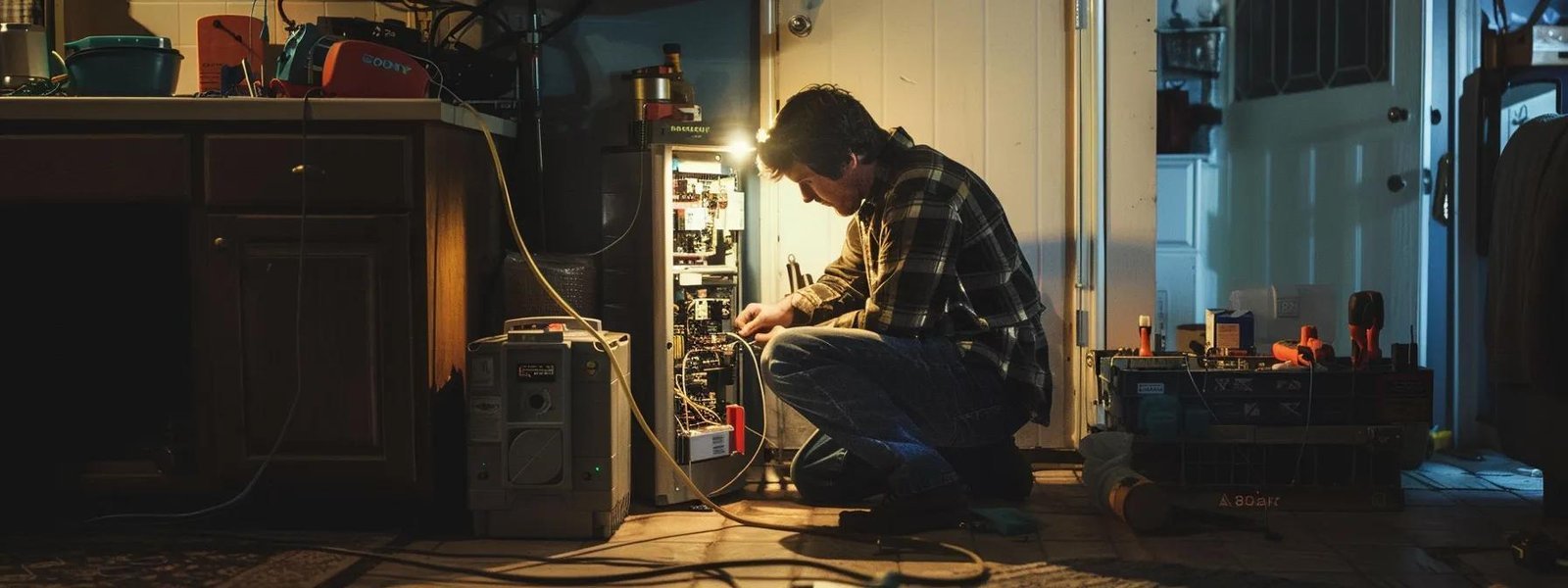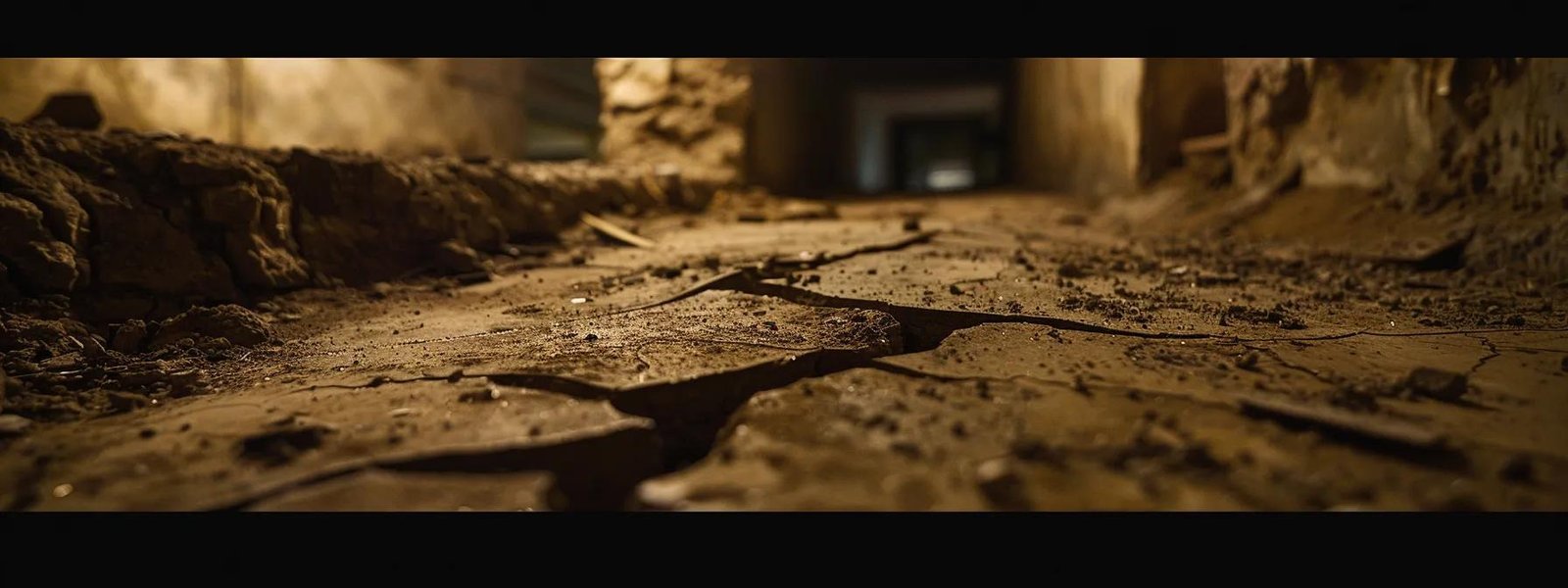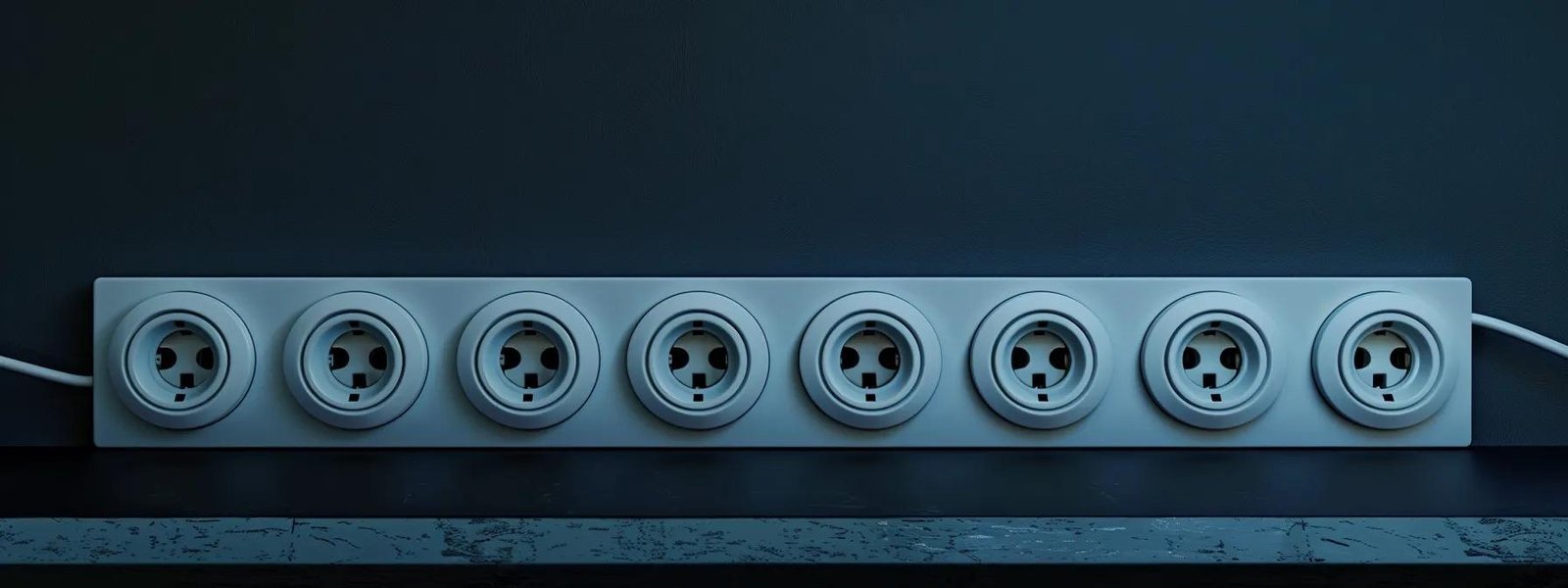
Are you frustrated by dead outlets in your home? This common issue can disrupt your daily routine, especially in key areas like the bathroom. In this guide, readers will learn how to diagnose and repair dead outlets, covering essential steps such as electrical diagnostics and troubleshooting techniques. By understanding the causes and knowing when to consult a professional electrician, homeowners can save time and money. This article will help identify problems with wires, grounds, and screws, ensuring your outlets work efficiently again.

Dead outlets can stem from various issues that homeowners should be aware of. Identifying tripped circuit breakers is often the first step in troubleshooting through electrical diagnostics. GFCI outlet problems may also contribute to the issue, along with loose or damaged wiring. Faulty outlets or switches and problems with the electrical panel can further complicate matters. Understanding these common causes will help in effectively diagnosing and repairing dead outlets.
Identifying tripped circuit breakers is a crucial step in diagnosing dead outlets. Homeowners should regularly inspect their electrical wiring and check the circuit breaker panel for any switches that are in the “off” position. If a power strip is overloaded, it can cause the circuit breaker to trip, cutting off power to the outlets connected to it. A qualified handyman can assist in resetting the breaker and ensuring that the electrical system is functioning safely and efficiently.
Recognizing GFCI outlet problems is essential for maintaining a safe electrical system in the home. These outlets, commonly found in areas like the basement or kitchen, are designed to protect against electrical shocks by monitoring voltage levels. If a GFCI outlet trips frequently, it may indicate a short circuit or a faulty appliance, and consulting a qualified electrician can help diagnose the issue and determine if a fuse needs replacement or if the outlet requires repair.
Detecting loose or damaged wiring is essential for diagnosing dead outlets in a home. Homeowners should look for signs such as flickering lights or outlets that feel warm to the touch, which may indicate a wiring issue. If an extension cord is used frequently and the outlet still does not work, it may be time to check the wiring connections or reset the circuit breaker to ensure everything is functioning properly.
Assessing faulty outlets or switches is a key step in diagnosing dead outlets in a home. Homeowners should check for signs such as discoloration, burning smells, or loose connections, which may indicate a malfunctioning outlet. If an outlet does not work after resetting the circuit breaker, it may need replacement or repair by a qualified electrician to ensure safety and proper functionality.
Evaluating issues with the electrical panel is essential when diagnosing dead outlets. Homeowners should check for any signs of damage, such as burnt or melted components, which can indicate a serious problem. If circuit breakers frequently trip or fuses blow, it may suggest an overload or a fault in the wiring, necessitating the expertise of a qualified electrician to ensure safe and effective repairs.

Before diagnosing and repairing dead outlets, it is essential to prioritize safety. Start by turning off power to the affected area to prevent electrical shocks. Wearing appropriate protective gear, such as gloves and safety glasses, is crucial. Using the right tools for electrical work ensures effective repairs. Finally, verify that power is off with a voltage tester to confirm safety before proceeding.
Turning off power to the affected area is a critical step in diagnosing and repairing dead outlets. Homeowners should locate the circuit breaker panel and switch off the breaker that controls the outlet in question. This action not only prevents electrical shocks but also ensures a safe working environment while troubleshooting the issue.
Wearing appropriate protective gear is essential when diagnosing and repairing dead outlets to ensure safety. Homeowners should equip themselves with insulated gloves and safety glasses to protect against electrical shocks and debris. This simple precaution can significantly reduce the risk of injury while working on electrical systems, allowing for a safer and more effective repair process:
Using the right tools for electrical work is essential for safely diagnosing and repairing dead outlets. Homeowners should have a basic toolkit that includes insulated screwdrivers, pliers, wire strippers, and a voltage tester. These tools not only enhance safety but also ensure that repairs are conducted efficiently and effectively, minimizing the risk of further electrical issues.
Verifying power is off with a voltage tester is a critical step in ensuring safety before diagnosing and repairing dead outlets. Homeowners should use a voltage tester to check the outlet and confirm that no electricity is present. This simple action prevents electrical shocks and provides peace of mind, allowing for a safe working environment while troubleshooting electrical issues.

Troubleshooting dead outlets involves several key steps to identify and resolve the issue effectively. Homeowners should start by checking other outlets on the same circuit to determine if the problem is isolated. Resetting tripped GFCI outlets, inspecting the outlet for visible damage, testing the outlet with a multimeter, and examining the circuit breaker panel are essential actions that can help pinpoint the cause of the dead outlet. Each of these steps provides valuable insights into the electrical system’s functionality and safety.
Checking other outlets on the same circuit is a vital step in diagnosing dead outlets. Homeowners should test nearby outlets to see if they are functioning properly, as this can help determine if the issue is localized or part of a larger electrical problem. If multiple outlets on the same circuit are dead, it may indicate a tripped breaker or a wiring issue that requires the attention of a qualified electrician to ensure safety and proper repair.
Resetting tripped GFCI outlets is a straightforward process that can often resolve issues with dead outlets in a home. Homeowners should locate the GFCI outlet, which is typically found in areas like kitchens and bathrooms, and look for the “reset” button. Pressing this button can restore power to the outlet and any connected devices, making it an essential step in troubleshooting electrical problems.
Inspecting the outlet for visible damage is a critical step in diagnosing dead outlets. Homeowners should look for signs such as burn marks, discoloration, or any unusual odors, which may indicate overheating or electrical faults. If any damage is observed, it is advisable to consult a qualified electrician to assess the situation and perform necessary repairs, ensuring the safety and functionality of the electrical system.
Testing the outlet with a multimeter is an effective way to diagnose dead outlets in a home. Homeowners should set the multimeter to the AC voltage setting and carefully insert the probes into the outlet slots. A reading of around 120 volts indicates that the outlet is functioning properly, while a reading of zero volts suggests a problem that may require further investigation or professional assistance.
Examining the circuit breaker panel is a crucial step in diagnosing dead outlets. Homeowners should look for any circuit breakers that are in the “off” position or show signs of tripping, as this can indicate an overload or fault in the electrical system. If multiple breakers are tripped, it may suggest a larger issue that requires the expertise of a qualified electrician to ensure safe and effective repairs.

Homeowners can effectively address common outlet issues by following a few straightforward steps. This section covers essential tasks such as replacing a faulty outlet safely, tightening loose wire connections, and replacing worn out or damaged wiring. Additionally, it discusses updating older two-prong outlets to three-prong configurations and installing new GFCI outlets where needed, ensuring a safer and more functional electrical system.
Replacing a faulty outlet safely is a critical task for homeowners looking to restore functionality to their electrical system. First, it is essential to turn off the power at the circuit breaker to prevent any risk of electrical shock. Once the power is off, the homeowner can remove the outlet cover and unscrew the outlet from the electrical box, taking care to note the wiring connections. After replacing the old outlet with a new one, ensuring that all connections are secure and the outlet is properly mounted will help maintain safety and efficiency in the home’s electrical system.
Tightening loose wire connections is a vital step in repairing dead outlets. Homeowners should first ensure the power is turned off at the circuit breaker to avoid electrical shocks. Once safe, they can remove the outlet cover and check the wire connections, tightening any loose screws to ensure a secure fit. This simple action can restore functionality to the outlet and prevent future issues, making it an essential part of maintaining a safe electrical system in the home.
Replacing worn out or damaged wiring is a crucial step in restoring functionality to dead outlets. Homeowners should first ensure that the power is turned off at the circuit breaker to avoid any risk of electrical shock. Once the power is off, they can carefully remove the outlet and inspect the wiring for any signs of wear, such as fraying or discoloration. If damaged wiring is found, it is essential to replace it with new, properly rated wire to ensure safety and compliance with electrical codes. This proactive approach not only resolves the immediate issue but also helps prevent future electrical problems in the home.
Updating older two-prong outlets to three-prong outlets is an important step in enhancing electrical safety and functionality in a home. This upgrade allows homeowners to use modern appliances that require a grounded connection, reducing the risk of electrical shocks. To perform this upgrade, it is essential to turn off the power at the circuit breaker, remove the existing outlet, and install a new three-prong outlet, ensuring that the ground wire is properly connected for safety:
Installing new GFCI outlets where needed is an important step in enhancing electrical safety in the home. These outlets are designed to protect against electrical shocks, especially in areas prone to moisture, such as kitchens and bathrooms. Homeowners should ensure that the power is turned off at the circuit breaker before removing the old outlet and replacing it with a new GFCI outlet, making sure to connect the ground wire properly for optimal safety:

Recognizing signs of serious electrical problems is crucial for homeowners dealing with dead outlets. Understanding the risks of DIY electrical repairs can prevent accidents and ensure safety. Finding a qualified electrician in the area is essential for effective solutions. Preparing for professional electrical service will streamline the process, ensuring that the necessary repairs are handled safely and efficiently.
Homeowners should be vigilant for signs of serious electrical problems that may indicate the need for professional assistance. Symptoms such as frequent circuit breaker trips, burning smells near outlets, or flickering lights can signal underlying issues that require expert evaluation. Ignoring these warning signs can lead to more significant hazards, making it essential to consult a qualified electrician when these problems arise:
Understanding the risks of DIY electrical repairs is essential for homeowners attempting to diagnose and repair dead outlets. While some minor issues may seem manageable, improper handling of electrical components can lead to serious hazards, including electrical shocks or fires. Homeowners should recognize that hiring a qualified electrician not only ensures safety but also guarantees that repairs are performed correctly, preventing future complications and maintaining the integrity of the home’s electrical system.
Finding a qualified electrician in your area is essential for addressing dead outlets and ensuring the safety of your home’s electrical system. Homeowners should look for licensed professionals with positive reviews and a solid reputation in the community. It is advisable to request estimates and inquire about their experience with similar electrical issues, as this can help ensure that the chosen electrician is well-equipped to handle the specific problems at hand.
Preparing for professional electrical service is essential for homeowners facing issues with dead outlets. Before the electrician arrives, it is helpful to gather information about the symptoms observed, such as flickering lights or frequent circuit breaker trips. This preparation allows the electrician to diagnose the problem more efficiently and ensures that the necessary tools and parts are available for a timely repair:

Performing regular electrical maintenance is essential for preventing future problems with outlets. Homeowners should avoid overloading circuits, keep outlets clean and dry, and educate household members on electrical safety. Upgrading the home’s electrical system as needed can also enhance safety and functionality. Each of these practices contributes to a reliable electrical system and minimizes the risk of dead outlets.
Performing regular electrical maintenance is vital for preventing future problems with outlets in the home. Homeowners should routinely inspect outlets for signs of wear, such as discoloration or loose connections, which can lead to dead outlets if left unaddressed. Additionally, ensuring that circuits are not overloaded and that GFCI outlets are functioning properly can significantly reduce the risk of electrical issues, promoting a safer living environment.
Avoiding overloading circuits is essential for maintaining a safe and functional electrical system in the home. Homeowners should be mindful of the total wattage of devices plugged into a single outlet or circuit, as exceeding the recommended limits can lead to tripped breakers or even electrical fires. For example, using multiple high-wattage appliances, like space heaters or microwaves, on the same circuit can quickly overload it, resulting in dead outlets and potential hazards.
Keeping outlets clean and dry is essential for preventing future problems with dead outlets in the home. Homeowners should regularly inspect outlets for dust, debris, or moisture, as these can lead to electrical issues or even hazards. Simple practices, such as using a dry cloth to wipe down outlets and ensuring that no liquids are spilled near them, can significantly enhance the safety and functionality of the electrical system:
Educating household members on electrical safety is essential for preventing future problems with outlets. Homeowners should discuss the importance of not overloading outlets and the dangers of using damaged cords or appliances. By fostering an understanding of safe practices, such as keeping liquids away from outlets and knowing how to reset tripped circuit breakers, families can contribute to a safer home environment and reduce the risk of dead outlets.
Upgrading a home’s electrical system is essential for preventing future problems with outlets. Older homes may have outdated wiring or insufficient capacity to handle modern electrical demands, leading to issues like dead outlets or frequent circuit breaker trips. Homeowners should consider consulting a qualified electrician to assess their electrical system and recommend necessary upgrades, such as installing additional circuits or replacing outdated wiring, to ensure safety and reliability in their electrical infrastructure:
Diagnosing and repairing dead outlets is crucial for maintaining a safe and functional electrical system in any home. Homeowners should be proactive in identifying common issues, such as tripped circuit breakers, GFCI problems, and damaged wiring. Taking the necessary safety precautions and knowing when to consult a qualified electrician can prevent serious hazards. By understanding these steps, homeowners can ensure their electrical systems remain reliable and efficient, ultimately enhancing their living environment.


